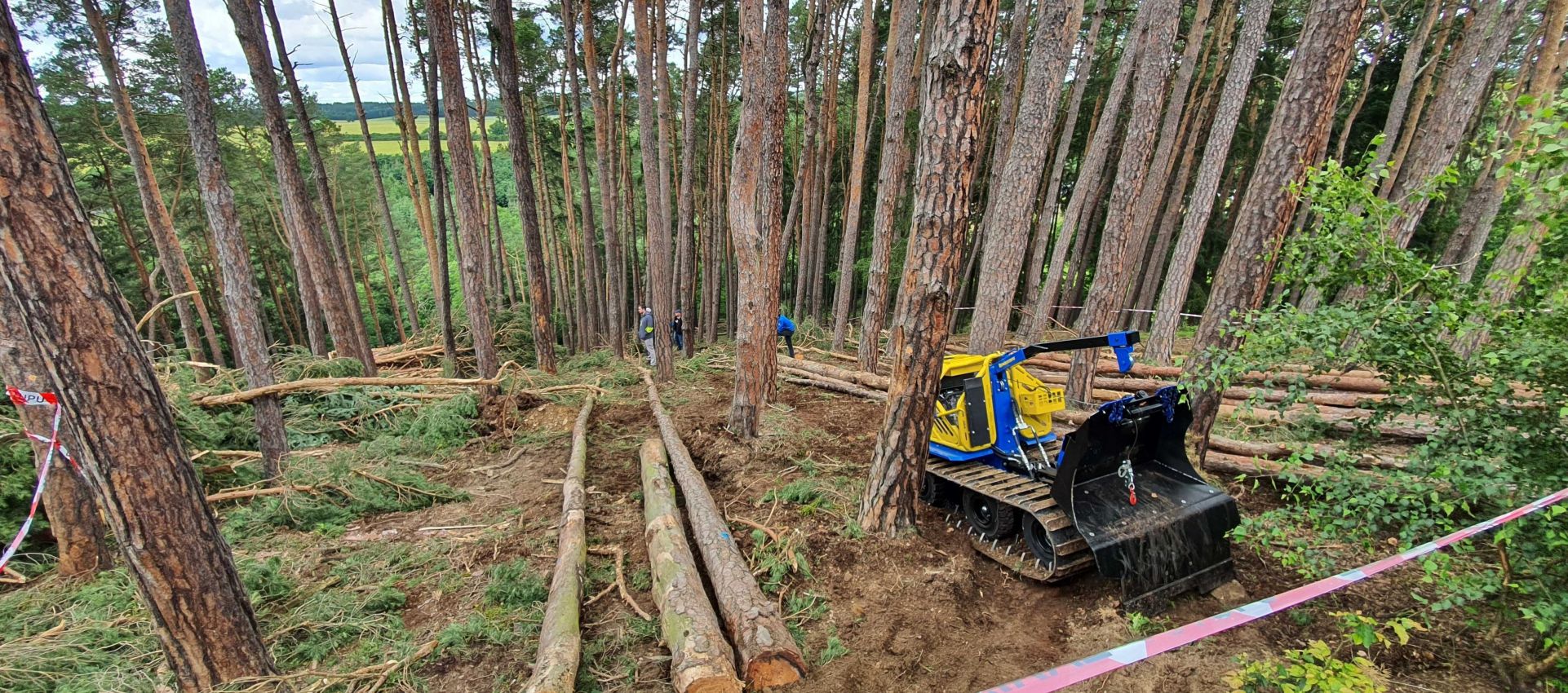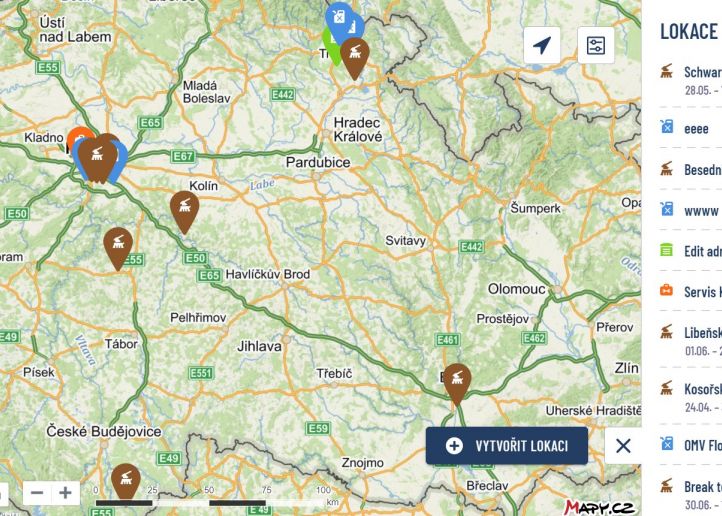
At the end of June this year, we got an offer in Eluvia to visit the FOREST SHOW 2021 forestry trade fair and demonstration event. This option followed the launch of the LogBook application, which simplifies scheduling work for wood chippers, which we developed this spring with a woodworking company. We could not have missed the invitation to the event, which simulates the normal operating conditions of not only chipping machines, but also other forestry equipment. Majority of programmers, not only in our society, are naturally curious. In addition, the experience of actual operation is often not easy to gain, so we gladly accepted the invitation.
When we had arrived at the place and registered at the fair reception, we went to a nearby forest. The inspection route was compiled in the order corresponding to the steps of the mining process. Therefore we observed at the first site harvesters felling trees and immediately processing logs, trimming and cutting into logs of exact lengths. When working in particularly inaccessible terrain, foresters have to cut down trees with hand saws and move them to a more accessible place with a horse, but today they are “iron horses”, small powerful machines for pulling logs from the forest.
To the next station with wood chippers, we had to move to a flatter part of the forest, and on the way we met specialized forest transport equipment, which transports logs between the places of harvesting and temporary storage. The harvested and exported wood is either loaded and transported by ordinary trucks for further processing outside the forest, or it can also be processed directly in the forest.
This brought us to the more familiar machines and their operators. Wood chippers process some trunks and branches. Demonstration of performance has shown us that indeed the biggest challenge for powerful and cumbersome machines is to provide enough material for processing, which LogBook already helps.
The last activity of forest work is the cleaning of wood residues, which are no longer worth processing. Branches cut from trunks lying on the ground and stumps can be ground to a pulp by a cutter. This wood pulp fades faster in the forest than whole pieces of wood and does not interfere with people or animals.
This demonstration gave us an idea of how not only the production of wood chips takes place, but also expanded our awareness of logging and other types of wood processing. This information is very valuable for us not only when improving the existing LogBook application, but also when working on future projects with clients in the field of forestry.
Read also
Working in a woods has always been hard work. A saw, torn hands, sweat on the face. Fortunately times have progressed, and nowadays it is given that one cannot make one's work more efficient by some clever application. And we will look at one of these examples in today's article.


